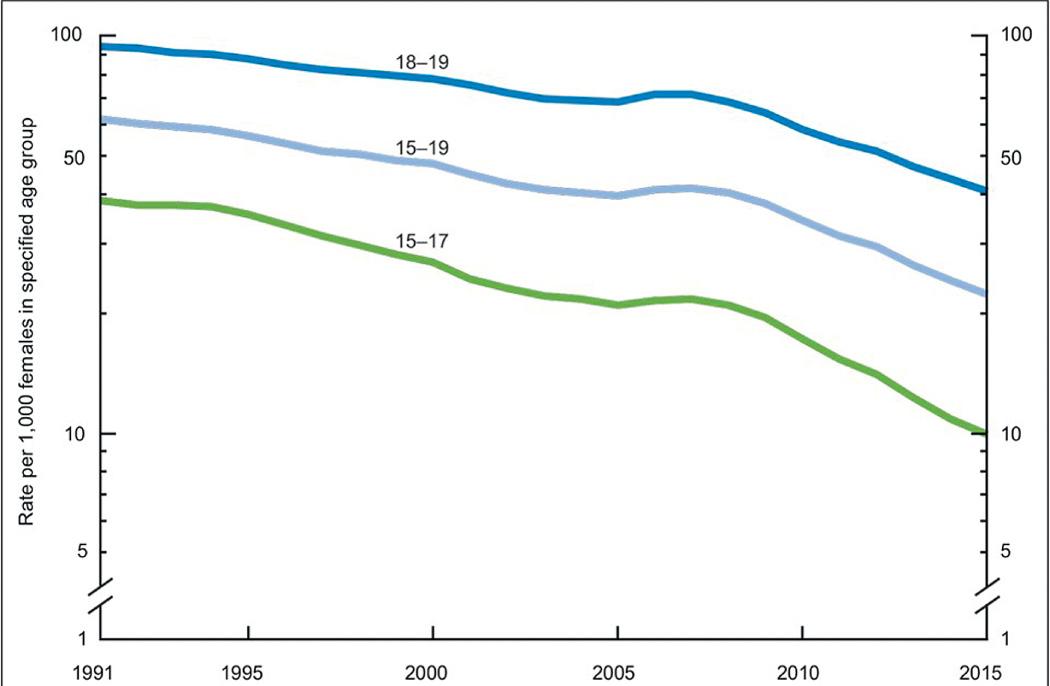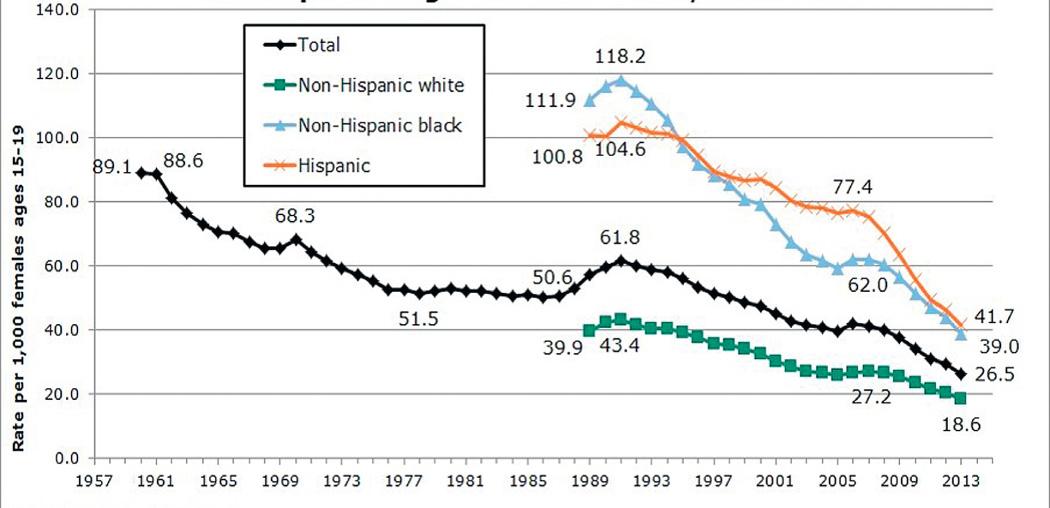Physical Address
304 North Cardinal St.
Dorchester Center, MA 02124
There has been a trend of decreasing teen births and pregnancies since 1991 ( Figs. 144.1 and 144.2 ). Teen birthrates in the United States are at a historic low secondary to increased use of contraception at first intercourse and use of dual methods of condoms and hormonal contraception among sexually active teenagers. Despite these data, the United States continues to lead other industrialized countries in having high rates of adolescent pregnancy, with >700,000 pregnancies per year. Nonetheless, the National Survey of Family Growth (NSFG) 2006–2010 revealed that less than one third of 15-19 yr old females consistently used contraceptive methods at last intercourse.


The improvement in U.S. female teen birthrates is attributed to 3 factors: more teens are delaying the onset of sexual intercourse, are using some form of contraception when they begin to have sexual intercourse, and are using long-lasting contraceptive agents such as injections, implants, and intrauterine devices (IUDs).
Most pregnancies among U.S. adolescents are unintended (unwanted or mistimed); 88% of births to teenagers 15-17 yr old were the result of unintended pregnancies. Birthrate statistics underestimate actual adolescent pregnancy rates because the birthrate numerator includes the number of actual births per 1000 individuals in that age-group, but the pregnancy rate includes actual births, abortions, and best estimates of fetal loss per 1,000 adolescents in that age-group.
The abortion rate among adolescents 15-19 yr old was 14.3 per 1,000 females and accounted for 16.2% of all abortions in 2008. During the decade 1999–2008, the abortion rate decreased by 20.7% among adolescents 15-19 yr old, with a 5.8% decrease noted from 2004–2008.
In industrialized countries with policies supporting access to protection against pregnancy and sexually transmitted infections ( STIs ), older adolescents are more likely to use hormonal contraceptives and condoms, resulting in a lowered risk of unplanned pregnancy. Younger teenagers are likely to be less deliberate and logical about their sexual decisions, and their sexual activity is likely to be sporadic or even coercive, contributing to inconsistent contraceptive use and a greater risk of unplanned pregnancy. Better personal hopes for employment and higher educational goals are associated with lowered probability of childbearing in most groups. In nonindustrialized countries, laws permitting marriage of young and mid-teens, poverty, and limited female education are associated with increased adolescent pregnancy rates.
Adolescents may experience the traditional symptoms of pregnancy: morning sickness (vomiting, nausea that may also occur any time of the day), swollen tender breasts, weight gain, and amenorrhea. Often the presentation is less classic; headache, fatigue, abdominal pain, dizziness, and scanty or irregular menses are common presenting complaints.
In the pediatric office, some teens are reluctant to divulge concerns of pregnancy. Denial of sexual activity and menstrual irregularity should not preclude the diagnosis in face of other clinical or historical information. An unanticipated request for a complete checkup or a visit for contraception may uncover a suspected pregnancy. Pregnancy is still the most common diagnosis when adolescents present with secondary amenorrhea.
Table 144.1 provides classic symptoms, laboratory tests, and physical changes in the diagnosis of pregnancy.
Missed menses, breast tenderness, nipple sensitivity, nausea, vomiting, fatigue, abdominal and back pain, weight gain, urinary frequency.
Teens may present with unrelated symptoms that enable them to visit the doctor and maintain confidentiality.
Become a Clinical Tree membership for Full access and enjoy Unlimited articles
If you are a member. Log in here